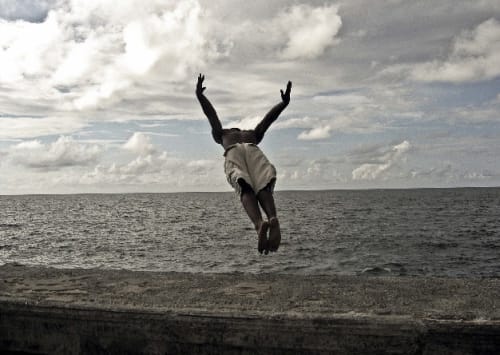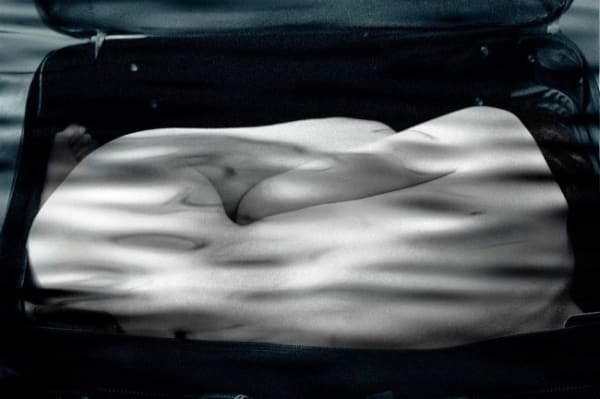The Light in Cuban Eyes
Jenkins Johnson Gallery, San Francisco is pleased to present The Light in Cuban Eyes, a group exhibition opening Thursday, September 10, 2015. The exhibition of contemporary Cuban photography has many works that are being shown on the west coast for the first time. Participating artists include: Pedro Abascal, Pavel Acosta, Juan Carlos Alom, Jorge Luis Álvarez Pupo, Ramsés Batista, Raúl Cañibano, Arien Chang, Donis Dayán, Reinaldo Echemendía Cid, Adrián Fernández, Eduardo García, Alejandro González, Liudmila + Nelson, Kadir López Nieves, José Julián Martí, Néstor Martí, René Peña, Alejandro Pérez, Michel Pou, Leysis Quesada, Alfredo Ramos, and Lissette Solórzano.
The photographs featured at Jenkins Johnson Gallery were created during and after Cuba’s “Special Period”, occurring after the fall of the Soviet Union in 1992, and the withdrawal of Soviet backing. Some of the photographs betray this sense of hardship, while many also reveal the energy and beauty of the island and its people. Works range from traditional silver gelatin prints of street scenes to three-dimensional, digitally created images.
Jenkins Johnson Gallery, San Francisco is pleased to present The Light in Cuban Eyes, a group exhibition opening Thursday, September 10, 2015. The exhibition of contemporary Cuban photography has many works that are being shown on the west coast for the first time. Participating artists include: Pedro Abascal, Pavel Acosta, Juan Carlos Alom, Jorge Luis Álvarez Pupo, Ramsés Batista, Raúl Cañibano, Arien Chang, Donis Dayán, Reinaldo Echemendía Cid, Adrián Fernández, Eduardo García, Alejandro González, Liudmila + Nelson, Kadir López Nieves, José Julián Martí, Néstor Martí, René Peña, Alejandro Pérez, Michel Pou, Leysis Quesada, Alfredo Ramos, and Lissette Solórzano.
The photographs featured at Jenkins Johnson Gallery were created during and after Cuba’s “Special Period”, occurring after the fall of the Soviet Union in 1992, and the withdrawal of Soviet backing. Some of the photographs betray this sense of hardship, while many also reveal the energy and beauty of the island and its people. Works range from traditional silver gelatin prints of street scenes to three-dimensional, digitally created images.
Many of the photographs are black and white silver gelatin prints. Lisette Solórzano, José Julián Martí, and Perdo Abascal work primarily in a traditional style and exhibited in both solo and group exhibitions at the XI Biennale of Havana in 2012. Young photographer Eduardo García has exhibited across Latin America and has won many awards for his work. Lisette Solórzano’s photograph from the Rail–Road series of silver gelatin prints depicting people riding a packed train harkens back to the iconic photograph Trolley – New Orleans by Robert Frank. José Julián Martí Professionally trained as a social documentary photographer creates dramatic images with the life and motion of Cuba as his subject. Self-taught, Pedro Abascal’s pieces have an authentic quality that mirrors the
atmosphere of the Havana streets he photographs. His image of young boys rollerblading in the boulevard is in the style of the intimate and candid moments captured by Henri Cartier Bresson in his photograph Child Playing in Ruins. Eduardo García finds photography to be the most immediate and truest form of an ephemeral moment, often depicting the incandescence of light and water, such as in his image The Wave, akin to Martin Munkácsi’s Three Boys at Lake Tanganyika portraying these children in a moment of freedom.
The exhibition also features works in vibrant and stunning colors such as the photographs by Pavel Acosta and Alejandro González. It is illegal in Cuba to import and register a car made after the year 1959 and in response to that people have created alternative solutions by indiscernibly renovating legal vehicles unbeknownst to authorities. In Pavel Acosta’s series Stolen Talent he photographs these revamped cars, commenting on “peoples’ ideals and what they do to achieve them”. The young artist Alejandro González depicts vivacious images in screaming color is his series Conducta Impropio (Improper Conduct) that uncovers parts of society repressed by officialdom, specifically the LGBT community, where he reveals the reality of a Cuba that has been hidden away.
Artists René Peña and Ramsés Batista take an orchestrated approach to their photography, creating remarkably poignant and textured pieces utilizing the human form and object. René Peña aims his focus inward and uses his self-portraits as a means of communication rather than just expression; his work is in many private collections in Miami as well as the Museum of Fine Arts, Houston. Ramsés Batista’s whimsical and narrative photographs are characterized by his use of subtle contrast, long exposures, and a keen eye for craft.
Liudmila & Nelson and Kadir López Nieves work in a less traditional manner, while retaining a quintessentially Cuban style. The abstracted and manipulated photographs of Liudmila & Nelson’s composites of time and space challenge the viewer to see a multifaceted world, in which the past and present seem to coincide. Their work was featured in the Cuban pavilion at the 2013 Venice Biennale. Nelson Ramírez, one half of the Liudmila & Nelson duo, is the director of the Fototeca de Cuba, Cuba’s repository of photography. Kadir López Nieves presents a pastiche of pre-revolution imagery of company stocks and the bourgeoisie lifestyle as parody of socio-economic power, played out on a Monopoly board of his own design in his mixed media series Habana Monopolio.
With a historic push by President Obama the US and Cuba have restored diplomatic relations. In August, Secretary of State John Kerry raised the American flag over the embassy, and he is the highest-ranking diplomat to visit Cuba in the last seven decades. For more than half a century poor relations between Cuba and the United States led to little interaction between the Cuban art community and the US, even though the trade embargo did not restrict the sale and purchase of artwork. While Cuba’s economy was in shamble its cultural life thrived. Artists created in countlessstyles and methods, as The Light in Cuban Eyes shows. The artists in the exhibit present divergent bodies of work that pay tribute to the rich cultural history of their homeland.
The Light in Cuban Eyes is inspired by Melanie P. Plonsker’s personal collection, which she hand-carried back to America over several trips between 2002 and 2012. The exhibition coincides with the recent release of a book of the same title, featuring over 170 works of art by more than 50 artists. The book, published by Lake Forest College Press, is the only book on contemporary Cuban photography and is the first North American publication supported by the Cuban Ministry of Culture and the Fototeca de Cuba, Cuba’s repository of photography, akin to the Smithsonian’s Photography Department in Washington, DC.
-

Lissette Solórzano
Havana Coastline, from the series Malecon, 2004-2005
archival pigment print
23 1/2 x 31 1/2 inches
-

Lissette Solórzano
Untitled, from the series Rail-Road, 2002
gelatin silver print
16 x 20 inches
-

Liudmila & Nelson
Untitled, 2004
archival pigment print
22 x 32 inches
-

Liudmila & Nelson
Untitled, from the series El Viaje, 2004
archival pigment print
26 3/4 x 42 inches





